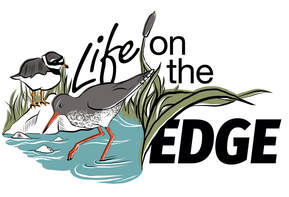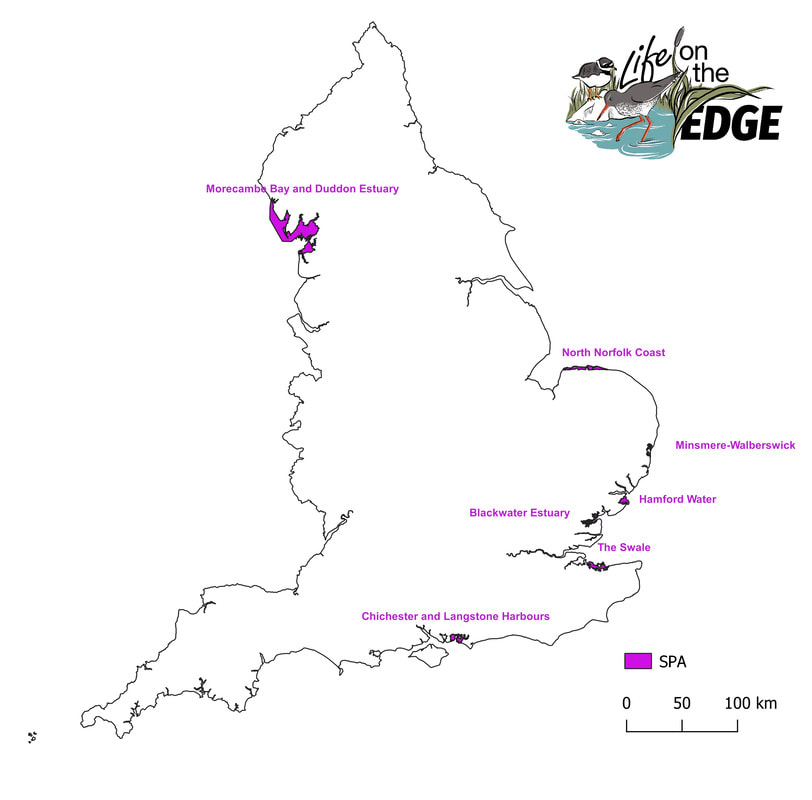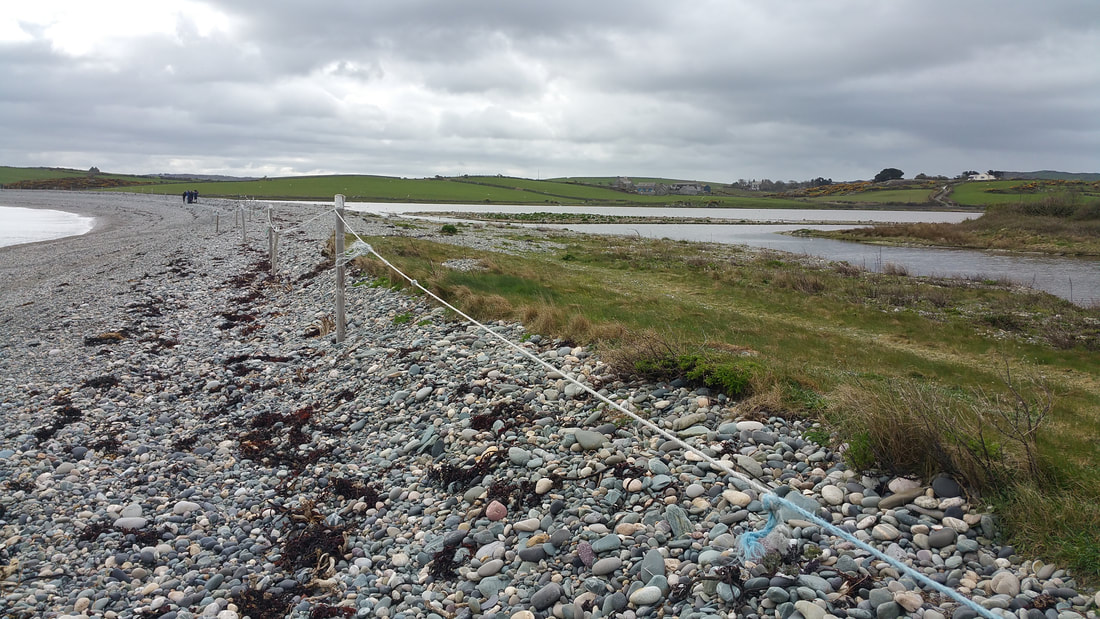Welcome to LIFE on the Edge Project
|
LIFE on the Edge is a 4-year LIFE Nature project lead by the RSPB with the National Trust with the aim to improve the condition of the target coastal sites while also building their long-term resilience and informing future work elsewhere.
|
Coastal habitats are under threat |
... so we have three objectives |
|
The low-lying coastlines support globally important numbers of breeding, migrating and wintering waterbirds. These birds and their habitats are protected within an extensive network of protected areas, but are nevertheless under great and growing pressure. This is due partly to natural erosion and deposition, partly to climate change-induced sea-level rise, and partly to developmental and recreational impacts.
|
|
Coastal habitat lossThe UK has lost more than 15% of its intertidal habitat since 1945, including 8,000 ha of saltmarsh and even more mudflat (Office of National Statistics 2016). In addition, it has lost 46% of its shingle and 18% of its dunes. Looking forward, RSPB research predicts that the UK will lose at least a further 60 ha of protected intertidal habitats per year to sea-level rise and accelerated erosion, plus additional areas outside designated sites. In a natural setting, such habitats could retreat inland; however, much of the UK coastline is backed by fixed sea walls (ca. 72% in England) and is therefore subject to ‘coastal squeeze’. |
Improving and creating habitats
|
The main focus of the project will be on the creation and restoration of habitat within the target Special Protected Areas (SPAs) to benefit birds for which these sites are designated.
North Norfolk Coast SPA (Titchwell RSPB): Hydrological management to improve the condition of 29 ha of freshwater marsh and reedbed, plus creation of 12 new islands to benefit a range of breeding and wintering birds. Minsmere/Walberswick SPA (Minsmere RSPB):Enhancement of a 20.5-ha saline lagoon/scrape plus restoration of nesting islands for terns and avocet. Blackwater Estuary SPA
The Swale SPA (Seasalter RSPB): Hydrological management of 16 ha of grazing marsh to benefit wintering and migrating birds and breeding redshank. Hamford Water SPA (Horsey Island RSPB): a flagship project using dredged material to restore eroding shingle bank which hosts the most important little tern colony in Essex and provides protection for important grazing marsh with breeding waders. |
Chichester & Langstone Harbours SPA (Langstone Harbour RSPB): Restoration of a 1.5-ha island in Langstone Harbour and re-profiling of several islands (covering 0.2 ha) at Hayling Oysterbeds. These activities will provide new and safer nesting habitats for little, common and sandwich terns, and will also benefit a variety of roosting shorebirds. Also partnership work on beach nesting birds.
Morecambe & Dudden Estuaries SPA
|
Beach nesting birds are "squeezed"Bird such as ringed plovers, oystercatchers and terns are threatened not only from eroded and flooded coastal habitats, but also from disturbance where they share space with people. As a result, there are fewer places where they can nest and raise chicks undisturbed. |
Reducing disturbance
|
We will be working directly with local communities and visitors in Morecambe Bay and Solent and Southampton to protect and raise awareness of the beach nesting birds. This work includes engaging local volunteers to find nests, protect them during the breeding season and engage with site visitors. We will also invest in interpretation boards, equipment and skill development of the volunteers.
More widely, we will work nationally with managers of other sites as part of the Beach Nesting Bird Programme to exchange knowledge and improve our solutions. We will work closely with Morecambe Bay Partnership and BirdAware Solent. |
Long-term strategy and networkingAlthough our programme of work is impressive, we need to already now plan for further expansion of large scale habitat creation projects in the UK and Europe. In doing so, we need to engage a wide range of stakeholders and learn from similar scheme. |
Looking forward...
We will work with statutory agencies, other NGOs and academics to define needs and opportunities and develop specific recommendations eg finding our next ‘Wallaseas’, flagship beneficial use of dredged material projects, and species specific opportunities. These will be a key legacy of the project, informing coastal management at the regional level in the post-project period.
Specific activities will include the following:
Specific activities will include the following:
- Assess feasibility and options for restoring ‘lost’ seabird colonies and identify opportunities to create safe and resilient nesting areas for at least three new internationally important seabird colonies.
- Identify opportunities to develop beneficial use projects with industry, coastal regulators and agencies in particular on The Medway, Kent; on the Solent, Hampshire; on the Blackwater, Essex; and on the Mersey/Ribble, Lancashire.
- Identify opportunities for managed realignment/regulated tidal exchange with the Environment Agency (EA) in line with National Habitat Creation Programme and Shoreline Management Plan policies, particularly along the Suffolk, Essex and North Kent coast.
- Work with the existing EA-led ReMeMaRe (Restoring Meadows, Marshes and Reefs) project to boost restoration of salt marshes, eel grass beds and oysterbeds. This project is expected to run for 5 years and to align partners’ activities as part of the government’s 25-year environment plan.
- Identify opportunities for freshwater habitat creation behind sea defences - particularly grazing marsh for breeding waders, early successional wetland habitats and saline/brackish lagoons for a range of priority species.
Latest news
If you have any questions you can contact us at [email protected]
Photo credits: Dunlin by Andy Hay, Avocet by Ben Andrew, Ringed Plover by Tom Marshall and Little Tern by Graham Goodall (rspb-images.com)
LOTE Logo credits: Saskia Wischnewski
Photo credits: Dunlin by Andy Hay, Avocet by Ben Andrew, Ringed Plover by Tom Marshall and Little Tern by Graham Goodall (rspb-images.com)
LOTE Logo credits: Saskia Wischnewski





